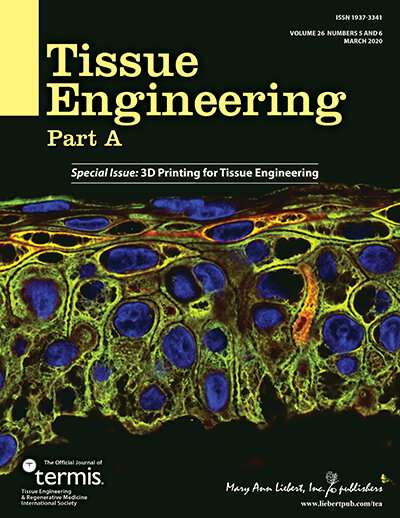Credit: Mary Ann Liebert Inc., publishers
For optimally engineered tissues, it is important that biological cues are delivered with appropriate timing and to specific locations. To aid in this endeavor, researchers have combined acoustic droplet ejection (ADE) technology with 3-D printing to establish stringently controlled growth factor patterning in porous constructs. Their work is reported in Tissue Engineering.
In "Acoustic Patterning of Growth Factor for 3-D Tissue Engineering," Yunzhi Peter Yang, Ph.D., Stanford University, and coauthors report the establishment of this new combination method. The authors started with biodegradable polycaprolactone (PCL) constructs, which were terminated with succinimide as test material or with sodium hydroxide or fibrin as controls, and then used ADE to deposit bone morphogenetic protein 2 (BMP-2) in precise locations throughout the lattice. C2C12 mouse myoblast cells were incubated with the constructs, and the osteogenic differentiation of these cells was monitored by alkaline phosphatase (AP) staining. The PCL-succinimide samples showed AP staining mirroring the patterned BMP-2 spots, thus demonstrating the potential of ADE growth factor patterning in tissue engineering.
"This novel combination of 3-D printing and ADE technologies addresses the crucial need for high spatial resolution of growth factor presentation in tissue engineered constructs," says Tissue Engineering Co-Editor-in-Chief Antonios G. Mikos, Ph.D., Louis Calder Professor at Rice University, Houston, TX. "While the use of this technology demonstrated great success in osteogenic differentiation, these techniques will also be tremendously beneficial to many other tissue types as well."
More information: Yaser Shanjani et al, Acoustic Patterning of Growth Factor for Three-Dimensional Tissue Engineering, Tissue Engineering Part A (2020). DOI: 10.1089/ten.tea.2019.0271
Provided by Mary Ann Liebert, Inc
























